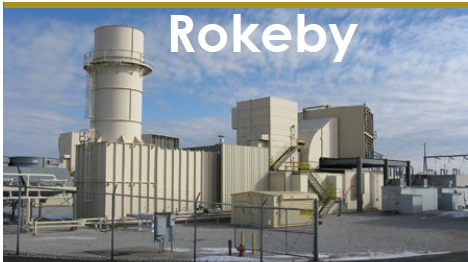Rain garden/sanitary lagoon upgrade
Challenge. The original sanitary lagoon at Rokeby Generating Station was designed and constructed during an early phase of plant expansion. After lagoon installation, an additional unit and support facilities were added to the site, resulting in the lagoon not having adequate capacity.
This triggered periodic material removal by an outside contractor. Annual contractor costs for pumping the lagoon was approximately $48,000 and was increasing as additional non-sanitary discharge points were added to the system. Furthermore, regulations covering lagoon design had been updated since the original Rokeby lagoon was installed and it no longer met county permitting requirements.
Solution. After gathering data on plant wastewater and rain-event flows into the sanitary system, plant personnel determined the sanitary and site drain flows should be separated. Data also indicated the sanitary lagoon could be significantly smaller once the flows were separated.
Since the site was developed over multiple phases, drawings of the underground piping were not as accurate as required; therefore, the first project action was to update piping drawings. This demanded excavation (hydrovac) activities to verify piping configuration. Once the existing drawings were updated, the piping system was redesigned to separate sanitary- and storm-water flows.
After system flows were determined, a design was developed using a standard sanitary lagoon for the waste flow and a bio-retention “rain garden” for storm-water and oily water separator discharges. The rain-garden percolation test was successfully completed and results were sent to a rain-garden design firm.
The project required modification of the site NPDES permit. The new permit removed the sanitary-lagoon outfall, required metering of a pump-pit sump discharge, and reconfiguration of the oily water inlet piping. Instead of installing a flowmeter at the lagoon inlet, the permitting authority allowed LES to record the site’s sewage injector operation to estimate flow to the sanitary lagoon.
Results. All existing sanitary, oily water separator, and storm-water flows can be handled by the new sanitary lagoon and bio-retention system, saving $48,000 in annual operating costs. A side benefit of the project was updated underground utility drawings and reconfiguration of the oily water separator system.
Project participant: Chris Hodges
Rokeby Generating Station
Lincoln Electric System
245-MW, dual-fuel, simple-cycle peaking facility located in Lincoln, Neb
Plant manager: Bruce Barnhouse




